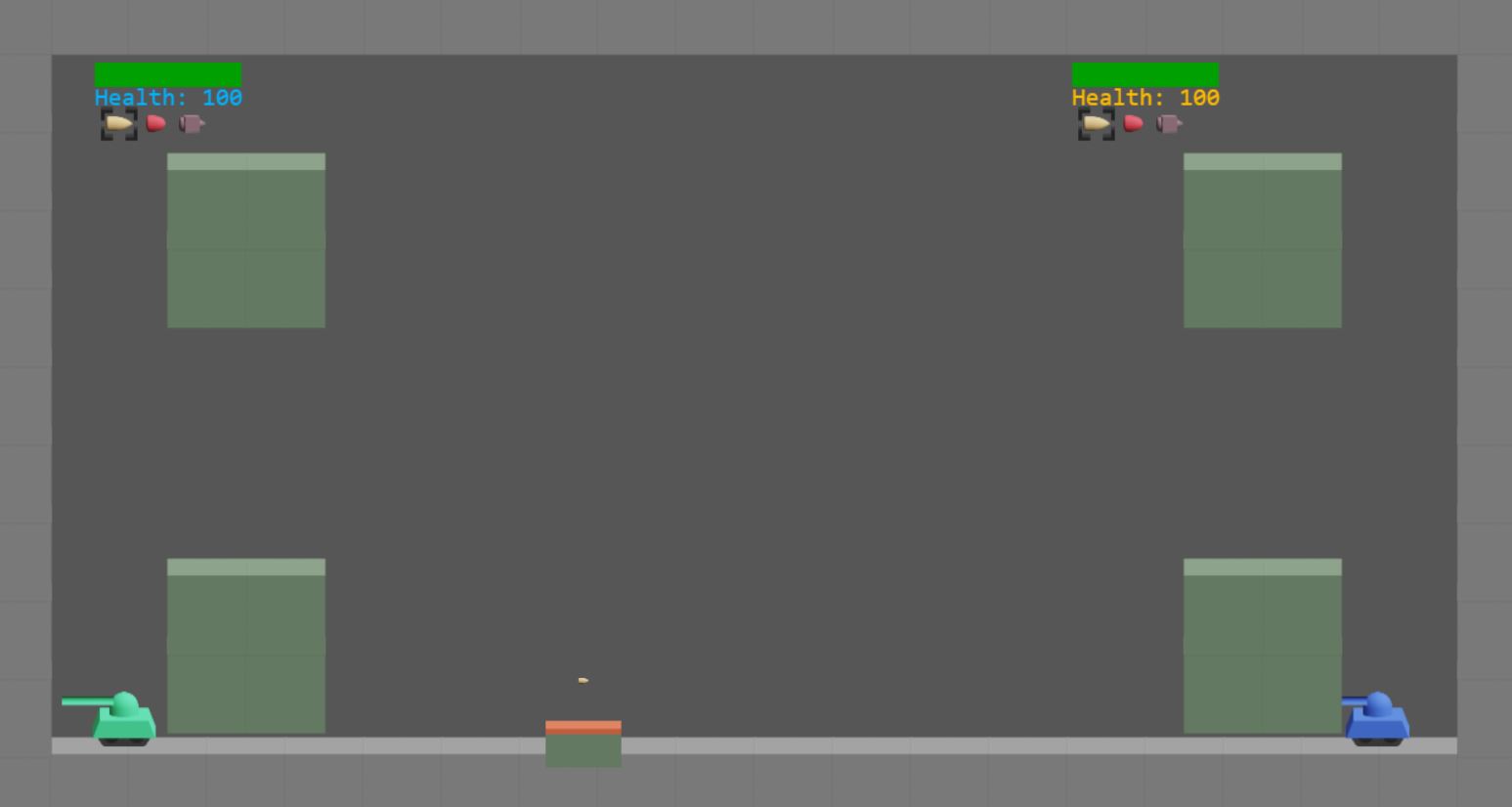Tank Showdown

Using the Box2d physics library in createjs allowed for us to achieve the desired gameplay rules and effects quickly. Implementing our game within a physics world also gives each object a consistent and expected behavior and feel.
BouncePlatform.ts
module objects{
export class BouncePlatform extends objects.PhysicsObject{
public health: number;
public destructable: boolean;
public graphic;
constructor( position: math.Vec2){
super( );
this.name = "wall";
this.x = position.x;
this.y = position.y;
var image= managers.Game.assetManager.getResult("wall4");
if(image){
this.graphic = new createjs.Bitmap(image);
this.graphic.regX = this.graphic.getBounds().width * 0.5;
this.graphic.regY = this.graphic.getBounds().width * 0.5;
this.graphic.scaleX = .151;
this.graphic.scaleY = .151;
this.addChild(this.graphic);
}
// this.graphic.x = -32;
// this.graphic.y = -32;
this.createRigidBody(Box2D.Dynamics.b2Body.b2_staticBody);
this.createRigidbodyFixture( Box2D.Collision.Shapes.b2PolygonShape.AsBox(32 / config.Quality.scale ,32 / config.Quality.scale ), 0, 1, 10);
managers.Game.addObjectToScene(this);
console.log("rigidbody", this.rigidbody)
}
public Update(): void{
if(this.rigidbody){
let position = this.rigidbody.GetPosition();
// console.log('wall rigidbody position', position)
this.x = position.x * config.Quality.scale;
this.y = position.y * config.Quality.scale;
// console.log('wall graphic position', this.x)
this.rotation = this.rigidbody.GetAngle() * (180 / Math.PI);
}
}
public BeginContact(self, other) {
// console.log("other", other.name);
if(other.name == "player"){
console.log("bounce the player")
let original_velocity = other.rigidbody.GetLinearVelocity();
let bounceVelocity = new Box2D.Common.Math.b2Vec2(0, 1);
let new_velocity = original_velocity;
new_velocity.Add(bounceVelocity);
other.rigidbody.SetLinearVelocity( original_velocity );
}
}
}
}
Copyright Scott Welsh 2025
☕ Buy me a coffee
☕ Buy me a coffee